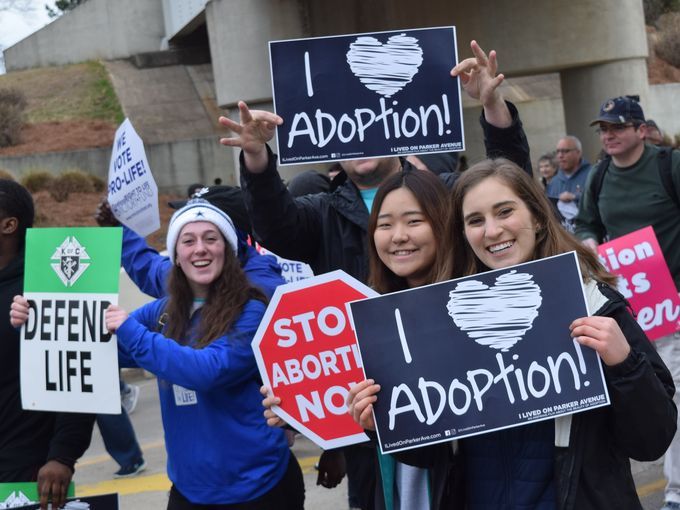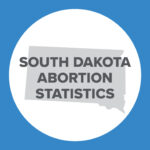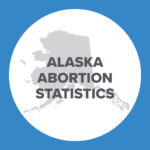The Role of Adoption in Dobbs-Era Pro-Life Policy

This is Issue 85 in the On Point Series.
In discussions about the Dobbs era for America, adoption is mentioned often by those across the ideological spectrum. On the pro-life side, adoption is promoted as a life-giving alternative to abortion, one which respects both the humanity of the unborn child and the duties of care the child’s mother has to protect her.[1] Many on the pro-choice side claim similarly that adoption is “common ground” in the fraught abortion wars and that the law ought to do more to make adoption more accessible.[2] And there are those who reject adoption altogether, especially as a meaningful alternative to abortion.[3]
The institution of adoption does have a broad, strong cultural appeal. Eighty-six percent of Americans have a favorable to extremely favorable view of adoption.[4] And yet, despite its strong appeal, very few women consider, much less choose, to place children for adoption. In 2020, there were 930,160 abortions.[5] The number of infants relinquished for private, domestic adoption that same year was 19,658.[6] The annual ratio of abortions to adoptions is nearly 50:1.[7]
So, we have a paradox of a generalized abstract public esteem for the institution of adoption but a soft stigma against the actual choice of it, especially when legalized abortion is readily available. As one sociologist put it: “[o]ne can infer that adoption may still be a ‘devalued status’ [I.e., a stigma] in the sense that Americans regard it as ‘a last alternative’ to having biological children (and, if one has a child while unmarried) a last alternative to keeping one’s biological child.”[8] And, one may add, a last alternative to aborting one’s biological child.
The disproportionate number of abortions to adoptions reveals that most women facing an unplanned pregnancy do not consider adoption as a meaningful option. Of course, we must recognize the profound bond a mother develops with her child during pregnancy, which may be a deterrent to the choice of adoption and which should always encourage policymakers to prioritize policies and resources for women who choose to parent and to promote the active role of fathers.
Nevertheless, many women who for whatever reason are unable to parent still reject adoption in favor of abortion. Although studies about women’s decision-making about adoption, especially vis-à-vis abortion, are limited, there are many, complex possible explanations for this.[9] For example, serious misunderstandings exist about the contemporary practice of adoption, such as the common conflation of private adoption with the foster care system or the misimpression that families who place a child for adoption will have no contact with her again or even know where she has been placed. Whatever the reason, for women facing unplanned pregnancies, adoption is the “non-option.” “Regardless of familial, educational, racial, and socioeconomic differences, women are more likely to parent or have an abortion than to place an infant for adoption.”[10]
Many of those who work with pregnant women in pregnancy resource centers report that they do not bring up adoption for fear of driving an undecided or abortion-minded woman to abort her child.[11] Instead, they focus on the resources available to the mother if she chooses to raise her child. But the statistics reveal that once childrearing is off the table, most women believe that abortion is their only real choice.
On the other hand, if abortion is off the table, adoption becomes a much more likely choice. One frequently cited study found that 91% of women denied an abortion due to gestational limits chose to parent, and 9% placed a child for adoption.[12] This study is often cited for the proposition that women denied abortion will not choose adoption.[13] However, based on 2020 data (with abortion on the table), of the women who choose either adoption or abortion (as opposed to parenting), only 2.1% choose to place for adoption,[14] demonstrating adoption may play a much more meaningful role in states without readily available abortion.
With this background in mind, it is incumbent upon those who wish to provide alternatives to abortion for pregnant women to advance policies that highlight the unique gifts of adoption in a way that ensures it is a meaningful option. Of course, there are many venues for this to occur, whether in education, media, advertising, private initiative, or legislation. The particular policy appropriate for each state will depend on many factors, including the availability of legal abortion.
The following are recommended pro-adoption initiatives that may be appropriate for federal and/or state legislation:
Policies That Promote Adoption as a Social Good, Recommended Regardless of Availability of Legal Abortion
- Adoption Tax Credit (federal/state)
- Problem: Since 1996, Congress has passed the adoption tax credit, benefiting adoptive parents, which covers qualified expenses (including court fees, agency fees, attorney fees, travel, meals, etc.) related to the adoption of a child.[15] While it may only benefit the birthmother (and therefore her decision-making) indirectly, the adoption tax credit does send a strong message that adoption is a public good and promotes the permanent placement of children in safe and loving homes by defraying the significant costs associated with adoption.
- Recommendations[16]:
-
- Continued support for the adoption tax credit.
- Enhance the adoption tax credit to make it a refundable credit.[17]
- Enhance the adoption tax credit to ensure that allowable birthmother expenses constitute “qualified adoption expenses.”
- In states with income taxes, provide or enhance a tax credit or deduction in order to promote adoption.[18]
- Create a business tax credit for corporations that support non-profit adoption organizations.[19]
-
- Reporting Requirements and Enhanced Data Collection (federal).
-
- Problem: There is a lack of accurate and adequate data about the incidence of private, infant adoption. This makes it difficult to assess the impact of pro-adoption legislation or to evaluate other factors and developments that may impact policy, legislation, and women’s decision-making.
- Recommendation: Federally mandated state-by-state reporting of adoption placements and prospective adoptive parents in-waiting by state.[20]
-
- There are models for such reporting in both the foster care context and the international adoption context. See https://www.acf.hhs.gov/cb/research-data-technology/statistics-research/afcars (detailed state-by-state statistics regarding child welfare, including public adoptions) and https://travel.state.gov/content/travel/en/Intercountry-Adoption/adoption-professionals/adoption-tracking-service.html (detailed adoption statistics in incoming intercountry adoptions to the United States).
- A potential vehicle is to make required reporting a stipulated component of the Court Improvement Program within the Title IV-B funding program.
-
-
- Improve and Fund Options Counseling (federal/state)
- Problem: many of those who work with pregnant women report that they do not know how to discuss adoption, and even avoid raising adoption for fear of driving an undecided or abortion-minded woman to abort her child.
- Recommendation: Develop best practices and fund options counseling training for hospitals, birthing centers, medical professionals, and pregnancy resource centers to adequately care for and support mothers who wish to learn about adoption or make an adoption plan.
- Note: The Adoption Opportunities Program already exists to award grants and contracts for, inter alia, the promotion of adoption from foster care.[21] This program could be a vehicle for funding infant adoption awareness training, and other options counseling training programs.
- Illustrative examples include:
- Infant Adoption Awareness Training Program (a now defunct federally funded program that awarded grants to adoption organizations to develop and implement programs to train the designated staff of eligible health centers in providing adoption information and referral to pregnant women on an equal basis with all other courses of action included in nondirective counseling for pregnant women).[22]
- The National Council for Adoption provides a free online pregnancy counseling training called “Consider the Possibilities” which is “designed to give professionals basic knowledge and the tools they need to understand and share the option of adoption on an equal basis with all other options. This training aims to give pregnancy counselors the confidence to comfortably share the option of adoption so that pregnant clients can be empowered to make a fully informed decision.”[23] It is endorsed by the Catholic University of America’s School of Social Work.
- Require Government-Funded Education Programs to Include Adoption Information (federal/state).
- Problem: the adoption stigma and lack of accurate adoption information persist in the culture, not simply in the context of women’s decision-making.
- Recommendation: Efforts should be made to educate the public, and especially young people, about the option of adoption so that it will be a more meaningful choice and so that participants may better support friends and family who may consider adoption. To that end, policy makers should support federally or state-funded family planning services and sex education programs to require clear and accurate adoption information.
- For example, some states require information about adoption to be included in the high school curriculum. See, e.g., La. Stat. Ann. § 17:263 (instruction in adoption awareness is required in health education secondary education courses, in both public and non-public schools). In order to satisfy this legal requirement, prolife educators and policy makers developed Option Hope Curriculum,[24] a model curriculum that could be adapted and scaled to other states.
- Fund Post-adoption Support Services for Birthparents and Adoptive Parents (federal/state).
- Problem: The experience of adoption does not end at placement, for the birth parent or the adoptive parent. Birth parents continue to need support groups, counseling, and other services to manage the complex emotions associated with placing a child for adoption. Welcoming a child through adoption, even newborns, often involves parenting children with significant emotional, psychological, physical, medical, and social needs. Adoptive parents often need training and continued wraparound support services to parent vulnerable children well.
- Recommendation: Funding for counseling, postnatal medical care, and other support for birth parents. Funding for counseling and post-adoption support services for adoptive families, especially in adoption of neglected, abused, older or special needs children.
- E.g., Birth Parent Support Act of 2009 (https://www.congress.gov/bill/111th-congress/house-bill/1505?q=%7B%22search%22%3A%22birth+parents%22%7D&s=3&r=7) (would have provided funding for services to birth parents who have placed a child for adoption, including post-adoption legal services, counseling, and training of mental health professionals, social workers and staff at hospitals on interactions with birth parents and adoptive families).
- Many states provide post-adoption services (such as counseling) and support to families that adopt through the foster care system. States could provide the same level of supportive services to all adoptive families, including those formed through private adoption.[25]
- Laws to Improve the Adoption Process (state)
- Problem: A deterrent to adoption is the perceived difficult, complicated nature of the adoption process and fear that the adoption could be disrupted. Particular legislative or policy means of improving the adoption process and reducing the likelihood of disruption will vary by state and depend on existing laws and practices.
- Sample Recommendation: One common fear is that an unknown father, who did not receive proper notice of the adoption and therefore did not provide consent, will appear to reclaim a child. Putative (or presumed) father registries are statutory mechanisms that provide the means to protect an unmarried father’s parental rights, preserving his right to notice and consent in the event of an adoption, while still promoting stable, prompt placements of children in adoptive families. Many states do not have such registries and existing registries are fraught with various problems, according to both practitioners and legal scholars. For example, if a child is conceived in another state, how would a putative father know he might need to file in another state of birth/placement? Statutes can be strengthened in various ways, both to protect the rights of biological fathers who wish to preserve their parental rights as well as to provide privacy to birth mothers and to provide more stability to adoptive placements.
- Potential legislative remedies include legislation allowing adoption agencies to rely upon other states’ putative father registry, legislation requiring notice be published in other states (of likely conception), or a national registry.[26]
- Protect Faith-Based Adoption and Foster Care Agencies
- Problem: Faith-based child placement service providers play a critical role[27] in identifying and supporting families for placement of adoptive and foster children. Numerous state and local governments across the country have effectively barred faith-based child placement service agencies from providing adoption and foster care services because of their religious beliefs, either through non-discrimination legislation or administrative regulations. Even after the favorable result in Fulton v. Philadelphia, regulatory uncertainty at the federal level regarding HHS interpretation and enforcement of grant rules has left agencies in a state of legal flux regarding the ability to manage placements consistently with their sincerely held religious beliefs.
- Recommendation: Ten states[28] have proactively passed laws affirming the right of faith-based providers to operate in accordance with their beliefs, thus ensuring that they will be able to help children and families in their communities. These laws are designed so that while faith-based agencies can continue to operate, no qualified adoptive or foster parent is excluded. These existing state laws may be used as a model for similar legislation in other states and at the federal level, in order to provide the legal certainty necessary for faith-based providers to continue their important work.
Policies in States that Retain Legalized Abortion
- Informed Consent (Women’s Right to Know Laws) (state).
- Problem: Informed consent laws in the abortion context (i.e., laws which require certain information be provided to a woman seeking an abortion) are often ill-designed or poorly executed and, in either case, do not inform women adequately about their alternative options. In particular, serious misunderstandings exist about the contemporary practice of adoption and most informed consent statutes do little to convey accurate information about newborn adoption or to clarify the common confusion between the practice of adoption and the foster care system.
- Recommendation: Require that all women considering an abortion be provided with accurate, complete, and non-coercive information about the option of adoption as part of the informed consent process.
- Past Success: To take one example, until recent legislative action, the informed consent materials available on the Louisiana state health department website directed women to a separate page that featured the phrase, “adoption services,” prominently. But if a woman clicked on this link, she was taken to a new page with two more links. The first link contained information about safe havens (i.e., laws which allow women to anonymously drop babies at a designated safe location like a fire station). The second link was to the state Department of Children & Family Services webpage (the agency which administers the state foster care system, and ironically in many states like Louisiana, the state organization is not authorized to administer voluntary placements of children). Neither of these links served to educate or assist a woman interested in learning more about private adoption. When brought to the attention of pro-life advocates in Louisiana, a coalition sought to amend the law, passing the Adoption Option Act, which ensures that Louisiana’s Department of Health website contains proactive information for birth parents about the benefits of adoption and guarantee that materials distributed to women in abortion facilities will also contain information on adoption. That website is now available here: http://ldh.la.gov/index.cfm/subhome/59%20/.
- The statute is available here: https://www.legis.la.gov/legis/ViewDocument.aspx?d=1095666 (requiring information about adoption to be made available on a stable website, and the agencies must be public or private nonprofit organizations, and not affiliated with abortion providers).
- See also Signs of Hope Act. See (http://bdfund.org/stories/signs-hope-legislation-abortion-alternatives-sign-mobile-website/ (requires the posting of signs in abortion clinics to inform women that they can’t be forced to abort, that the father must provide child support even if he’s offered to pay for the abortion, that adoptive parents may pay costs of prenatal care and childbirth, and that there are many agencies able to help the women during and after the pregnancy).
- Arizona
- Encouraged by the example of Louisiana, legislators passed a similar law in Arizona in 2021. See https://www.azleg.gov/legtext/55leg/1R/laws/0279.pdf (requires abortion clinics to provide adoption information to mothers during pregnancy and while the child is dependent).[29]
- The new website is available here: https://www.azdhs.gov/prevention/womens-childrens-health/womens-health/adoption-option-arizona/index.php
Elizabeth R. Kirk, J.D. is Director of the Center for Law & the Human Person at the Columbus School of Law at the Catholic University of America. She also serves as an associate scholar at the Charlotte Lozier Institute.
[1] See, e.g., Erika Bachiochi, “Embodied Equality: Debunking Equal Protection Arguments for Abortion Rights,” 34 Harvard Journal of Law and Public Policy 890, 937 (2013) (“[t]he duty of care a mother has toward her unborn child, when matched with an equally pressing responsibility she has to care for already born children, may, in circumstances only she (and her family) can discern, demand that she place the unborn child in the hands of adoptive parents.”)
[2] See, e.g., President Barack Obama, Commencement Address at Notre Dame, available at https://time.com/4336922/obama-commencement-speech-transcript-notre-dame/.
[3] See, e.g., Kami Rieck, “Adoption is Not a Substitute for Abortion,” available at https://www.washingtonpost.com/business/adoption-is-not-a-substitute-for-abortion/2022/06/04/0e8aaaba-e407-11ec-ae64-6b23e5155b62_story.html (June 4, 2022).
[4] Dave Thomas Foundation for Adoption, 2022 U.S. Adoption and Foster Care Attitudes Survey, available at https://www.davethomasfoundation.org/wp-content/uploads/2022/01/2022-US-Adoption-and-Foster-Care-Attitudes-Report-WEB-Final.pdf.
[5] https://www.guttmacher.org/article/2022/06/long-term-decline-us-abortions-reverses-showing-rising-need-abortion-supreme-court.
[6] See Adoption by the Numbers, available at https://adoptioncouncil.org/themencode-pdf-viewer-sc/?tnc_pvfw=ZmlsZT1odHRwczovL2Fkb3B0aW9uY291bmNpbC5vcmcvY29udGVudC91cGxvYWRzLzIwMjIvMDUvQWRvcHRpb24tYnktdGhlLU51bWJlcnMtTmF0aW9uYWwtQ291bmNpbC1Gb3ItQWRvcHRpb24tMjAyMi5wZGYmc2V0dGluZ3M9MTExMDEwMTExMDAxMDAxMDAwMCZsYW5nPWVuLVVT (p. 5) (19,658 of a total 115,353 adoptions in 2019 in the U.S.).
[7] The ratio based on reporting in 2020 is 47:1. However, according to Guttmacher methodology, the number of abortions does not include self-managed chemical abortions that are not overseen by clinicians. Therefore, the number of abortions, and the ratio of abortions to adoptions, is likely much higher.
[8] Allen P. Fisher, “Still ‘not quite good as having your own’? Toward a sociology of adoption,” 29 Annual Review of Sociology 335, 353 (2003).
[9] Compare G. Sisson, L.J. Ralph, H. Gould, D. G. Foster, “Adoption Decision Making among Women Seeking Abortion,” 27 Women’s Health Issues 136 (March 2017) (conclusions based on data from the Turnaway Study), abstract available at https://www.ansirh.org/research/publication/adoption-decision-making-among-women-seeking-abortion with Charles T. Kenny, “Birthmother, Good Mother,” Family Research Council and National Council for Adoption (2007). See generally Olga Khazan, “Why So Many Women Choose Abortion Over Adoption,” The Atlantic (May 20, 2019) available at https://www.theatlantic.com/health/archive/2019/05/why-more-women-dont-choose-adoption/589759/.
[10] Sisson, 27 Women’s Health Issues at 136.
[11] Curtis J. Young, “The Missing Piece: Adoption Advocacy and Pregnancy Resource Centers,” Family Research Council (2000), available at www.heartbeatinternational.org/pdf/missing_piece.pdf. See also Khazan (noting that, according to then-president of the National Council for Adoption, Chuck Johnson, “both anti-abortion and pro-abortion-rights groups fail to counsel pregnant women adequately about adoption. According to the group’s statistics, the referral rate to adoption agencies for both kinds of centers is about 1 percent.”)
[12] Sisson, 27 Women’s Health Issues at 139.
[13] See, e.g., Dobbs v. Jackson Women’s Health Org., slip opinion available at https://www.supremecourt.gov/opinions/21pdf/19-1392_6j37.pdf (dissent, p. 40, n. 17) (“The reality is that few women denied an abortion will choose adoption.”) (citing the Sisson study).
[14] This number is calculated as follows: according to Guttmacher in 2020 there were 930,160 abortions. See https://www.guttmacher.org/article/2022/06/long-term-decline-us-abortions-reverses-showing-rising-need-abortion-supreme-court. Therefore, with 19,658 adoptions, of those pregnancies where women did not parent, 2.1% of them placed for adoption. The rest chose abortion.
[15] 26 U.S. Code § 23. Current allowable credit is $14,440 per child. This credit begins to phase out at a modified adjusted gross income of $216,660 and phases out altogether at a MAGI of 256,660. See IRS Tax Topic No. 607, “Adoption Credit and Adoption Assistance Programs,” available at https://www.irs.gov/taxtopics/tc607.
[16] See also Charles A. Donovan, “The Adoption Tax Credit: Progress and Prospects for Expansion,” Charlotte Lozier Institute American Reports Series 4 (March 2013).
[17] See, e.g., Adoption Tax Credit Refundability Act of 2021, S. 1156, available at https://www.congress.gov/bill/117th-congress/senate-bill/1156/text.
[18] As of 2017, 19 states provided some sort of adoption-related tax relief. See Matt Connell, “Adoption Tax Credits: Utilization, State Expansions, and Taxpayer Savings,” available at
https://lozierinstitute.org/adoption-tax-credits-utilization-state-expansions-and-taxpayer-savings/.
[19] An analogous model is Mississippi’s individual and corporate tax credit for donations to foster care nonprofits. See https://lozierinstitute.org/using-tax-policy-to-fund-pro-life-objectives-a-case-study-in-mississippi/.
[20] While the focus of this policy proposal relates to domestic, infant placements, it would be most useful for required data collection to include all types of private adoption and to include data points such as age of child and relationship status to adoptive parent (e.g., relative adoption, stepparent adoption, non-relative adoption).
[21] See https://www.federalgrantswire.com/adoption-opportunities.html#.Yr4sxOzMLn4.
[22] https://www.acf.hhs.gov/cb/grant-funding/infant-adoption-awareness-training-program.
[23] See https://adoption.mclms.net/en/package/2924/course/1697/view.
[24] Available at https://www.optionhope.com/#:~:text=Infant%20Adoption%20is%20the%20Option%20of%20Hope&text=The%20Option%20Hope%20Initiative%20is,Louisiana%20Revised%20Statute%2017%3A263).
[25] Virginia provides post-adoption supportive services to all adoptive families. See https://www.dss.virginia.gov/files/division/dfs/ap/intro_page/manuals/02-01-2022/section_4_post-adoption_services.pdf.
[26] See, e.g., Protecting Responsible Fatherhood and Promoting Adoption Act of 2012 (would have created a registry known as the “National Responsible Father Registry”), available at https://www.congress.gov/bill/112th-congress/house-bill/6035/text?r=27&s=1.
[27] See Brief for The Coalition for Jewish Value et al. as Amici Curiae Supporting Petitioners, Fulton v. City of Philadelphia, 593 U.S. ___ (2021) (No. 19-123).
[28] Arizona, Kansas, Michigan, Mississippi, North Dakota, Oklahoma, South Dakota, Tennessee, Texas, Virginia.
[29] The author provided testimony to the Arizona House of Representatives, Health and Human Services Committee, on March 22, 2021, in support of this legislation. Available upon request.























